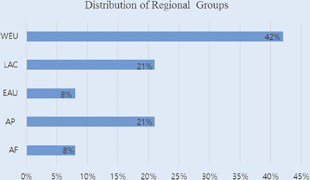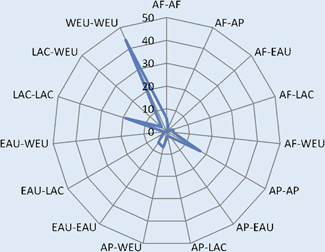Which regions and countries have come to the foreground in comparative politics (CP) in the past quarter-century? This study examined which geographical areas and which countries have had a high profile in CP. All characters onstage are valuable, else they would not appear, but all do not hold center stage. Similarly, in the CP field, all geographical regions and countries should be studied, even though they may be smaller and less populous. In the two major journals in the field, however, it is likely that many geographical regions and countries are neglected. Thus, this article examines which geographical regions and countries have been studied for comparative case studies in the US-based CP journals Comparative Political Studies (CPS) and Journal of Comparative Politics (JCP) from 1990 to 2015.
THE PROBLEM OF REGIONAL AND COUNTRY BIAS
Munck and Snyder (2007, 339) conducted research on authorship in the US-based CP journals. They found “the dearth of articles by foreign-based scholars” in main US-based academic journals including Comparative Politics, CPS, and World Politics. They argued that this seems to be against “openness” and “pluralism,” which are intrinsic and valued attributes of CP that is “a field that aspires to study the world” (Munck and Snyder Reference Munck and Snyder2007, 339). In a sense, “this [dominant] U.S.-centric perspective” shows a gap between as-it-is and as-it-ought-to-be in CP.
This article argues that the scarcity of foreign-based scholars publishing in US-based CP journals also is likely to be reflected in regions and countries that CP scholars choose to study. In particular, they tend to focus on specific regions and countries for their comparative study. This is evidence of “the [presumable] parochialism of research in comparative politics,” which Munck and Snyder (2007, 341) strongly criticized. Further evidence of parochialism in CP would exist if the two renowned CP journals show a similar bias in the distribution of countries and regions of interest.
METHODS
To determine if there is such a bias, this study analyzed a total of 118 “comparing-two-country” articles published in JCP and CPS. The articles span the years 1990 through 2015. For JCP, there are 57 articles, including 46 country-monads or single-country studies and 48 country-dyads or studies of country pairs. For CPS, there are 61 articles, including 55 country-monads and 47 country-dyads. Overall, including both journals, and considering the overlap of single countries and country pairs, there is a total of 72 monads and 80 dyads. Table 1 shows the number of monads and dyads appearing in JCP alone, CPS alone, and in both JCP and CPS from 1990 to 2015.
Table 1 Monad and Dyad Countries Appearing in JCP and CPS, 1990-2015
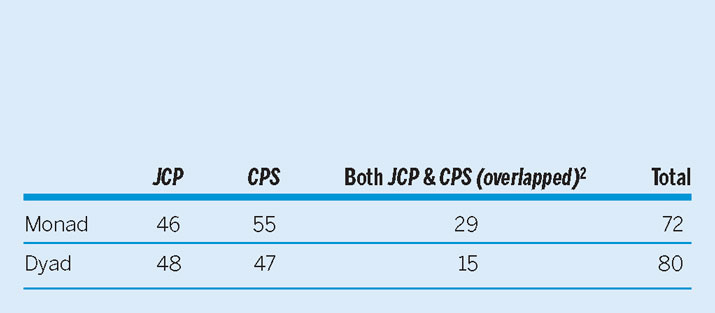
To analyze potential bias, I first reviewed the single-country studies, using graphics to examine the distribution of regions and countries within regions. I next looked at the two-country studies, determining whether the countries are from the same region and, if so, whether they are adjacent to one another. I conducted social-network analysis to provide a picture of the landscape of two-country studies.
FINDINGS: MONAD ANALYSIS
Regions are categorized according to the United Nations Regional Groups of Member States, as follows: African Group (AF), Asia-Pacific Group (AP), Eastern European Group (EAU), Latin American and Caribbean Group (LAC), and Western European and Others Group (WEU).Footnote 1 As shown in figure 1, 42% of published articles in JCP and CPS during the period of study focused on WEU, which includes the North American and Oceanic countries of the United States, Canada, Australia, and New Zealand. Conversely, AF and EAU each counted for only 8%. WEU clearly is the focus of a large plurality of studies.
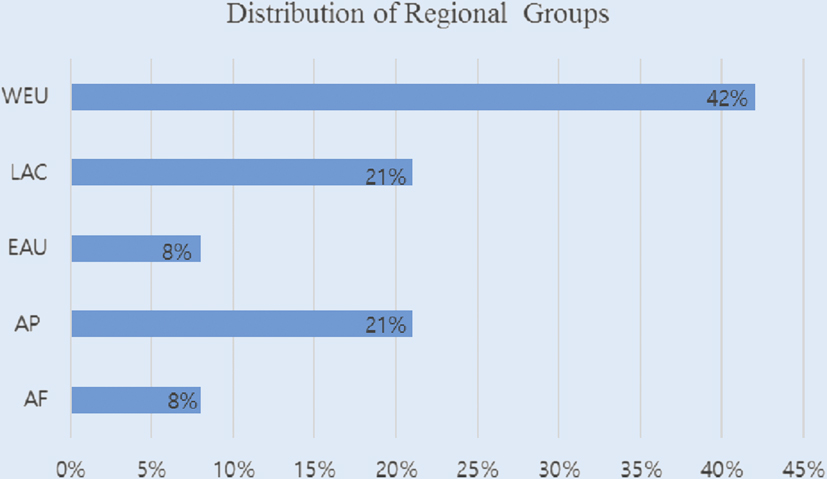
Figure 1 Distribution of Regional Groups as the Focus of Published Papers
Figure 2 shows the distribution of countries by separate regions. The unequal distribution is paralleled by the unequal distribution of countries within regional groups. It shows that studies in CP, regardless of region, have been heavily weighted in favor of certain countries.
First, in the case of WEU representing 42% of published articles, four countries (i.e., United States, United Kingdom, France, and Germany) accounted for 70% of articles about this region.
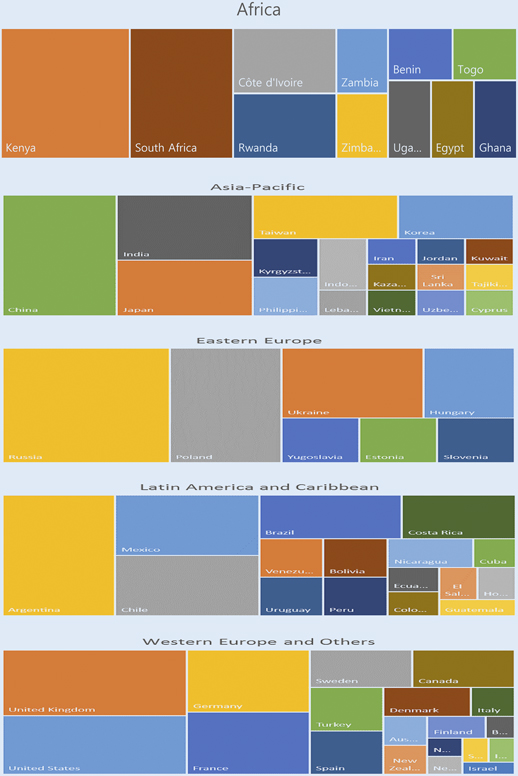
Figure 2 Distribution of Countries by Regions as the Focus of Published Papers
First, in the case of WEU representing 42% of published articles, four countries (i.e., United States, United Kingdom, France, and Germany) accounted for 70% of articles about this region. Second, in the case of LAC representing 21% of all published articles, five countries (i.e., Brazil, Argentina, Mexico, Costa Rica, and Chile) accounted for 66% of articles about this region. Third, in the case of AF representing 8% of all published articles, five countries (i.e., South Africa, Kenya, Rwanda, Zimbabwe, and Côte d’Ivoire) accounted for 75% of articles about this region. Fourth, in the case of AP representing 21% of all published articles during the same period, five nations (i.e., Korea, Taiwan, India, Japan, and China) accounted for 66% of articles about this region. Fifth, in the case of EAU, with only 8% of all published articles, four countries (i.e., Russia, Poland, Hungary, and Ukraine) accounted for 83% of EAU-related articles. As shown in figures 1 and 2, publications in these two leading journals focused disproportionately on certain regions and countries within particular regions, suggesting both regional and country biases.
FINDINGS: DYAD ANALYSIS
Many CP scholars—by choice (e.g., nationality, graduate training, country or research interests) and for practical concerns (e.g., language skills, research funds, and time)—are specialists in either the politics of a single country or, at best, a few countries. Are these constraints reflected in the focus of published research and therefore a source of bias in CP? When two countries are compared, are the countries from the same or different regions? Table 2 shows the distribution of country-dyads across regions. A country-dyad can include countries from the same or different regions. It is apparent that country-dyads most often include countries from the same region—indeed, these pairs comprised more than two thirds of the country-dyad studies (88/118= 74.6%). WEU-WEU dyads garnered a 37.3% (44/118=37.3%) share of all two-country CP articles. They also had a 50% (44/88=50%) share of articles dealing with symmetric dyads. In contrast, AF-AF and EAU-EAU dyads received much less attention: each garnered a 6% percent (6/118=5%) share.
Table 2 Distribution of Paired Countries Appearing in Two-Country Comparative StudiesFootnote 3
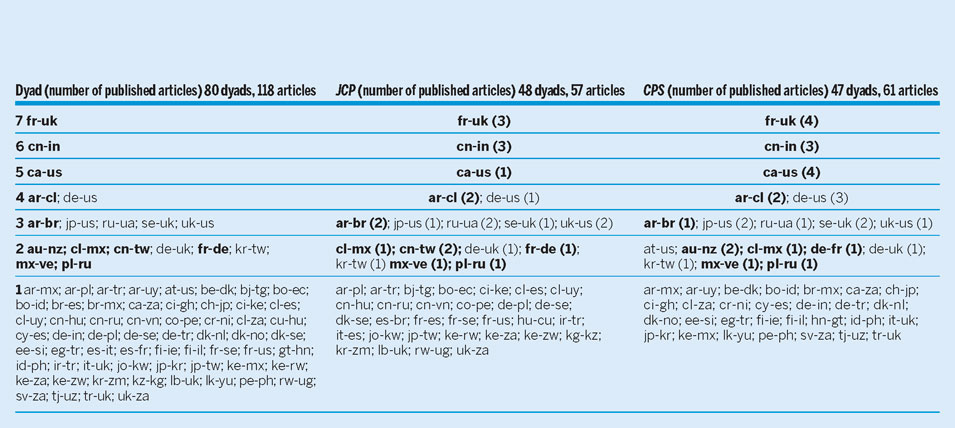
When two countries from the same region are compared, are they adjacent to one another? It is possible that CP scholars favor the most similar system design that a half-century ago was recommended by Przeworski and Teune (Reference Przeworski and Teune1970). Countries from the same region that are adjacent to one another are more likely to share similar characteristics, allowing for the control of extraneous factors, making comparison easier.
There also may be practical reasons (e.g., easier access and limited research resources) for comparing adjacent countries. Table 2 shows how often specific country pairs have been published in two-country CP studies. As shown, the same continental neighbors—including fr-uk (7); cn-in (6); ca-us (5); ar-cl (4); ar-br (3); jp-us (3); ru-ua (3); se-uk (3); and uk-us (3)—appear more frequently as the objects of CP study.
In summary, monadic studies involving countries from the WEU region and country-dyad studies involving two countries from this region (see figure 3) are the most frequently published studies. At the monad level, the United Kingdom, the United States, Germany, France, Argentina, and China appear most frequently. At the dyad level, France-United Kingdom, China-India, Canada-United States, Argentina-Chile, and Germany-United States are the preferred research subjects. In particular, the United Kingdom appeared as the most preferred country and France-United Kingdom as the most preferred country pair in JCP and CPS. Plainly, there is an uneven distribution of countries and country pairs in CP studies, as well as an uneven distribution of countries within regional groups. Based on social-network analysis, figure 4 depicts this uneven distribution of two-country CP studies. The related data are shown in table 3.
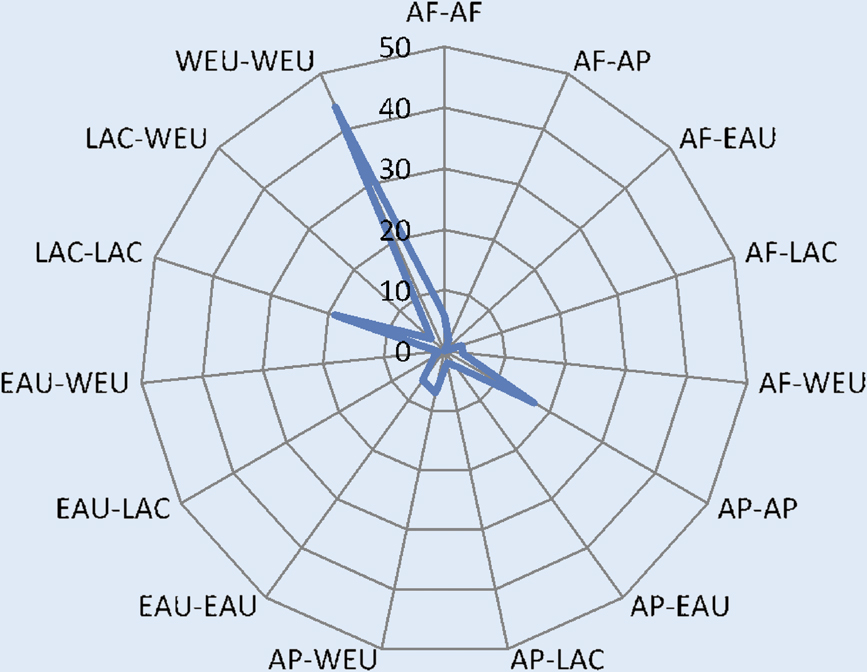
Figure 3 Distribution of Paired Regional Groups Appearing in the Two-Country Comparative Studies
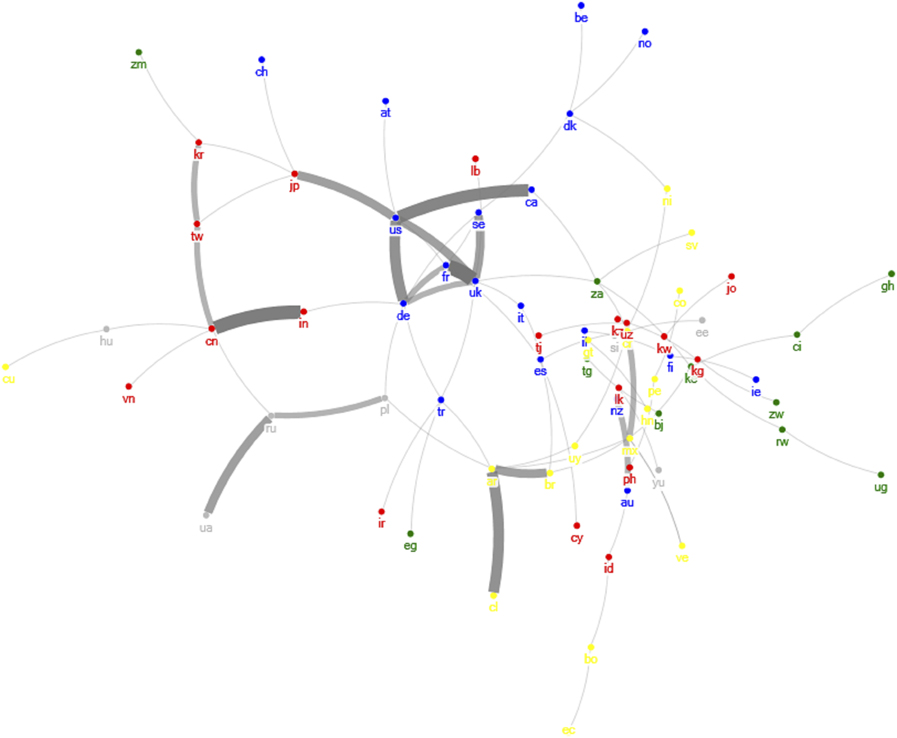
Figure 4 Social Network Visualization: Landscape of Two-Country Comparative Studies
Table 3 Social Network Analysis: Landscape of Two-Country Comparative Studies
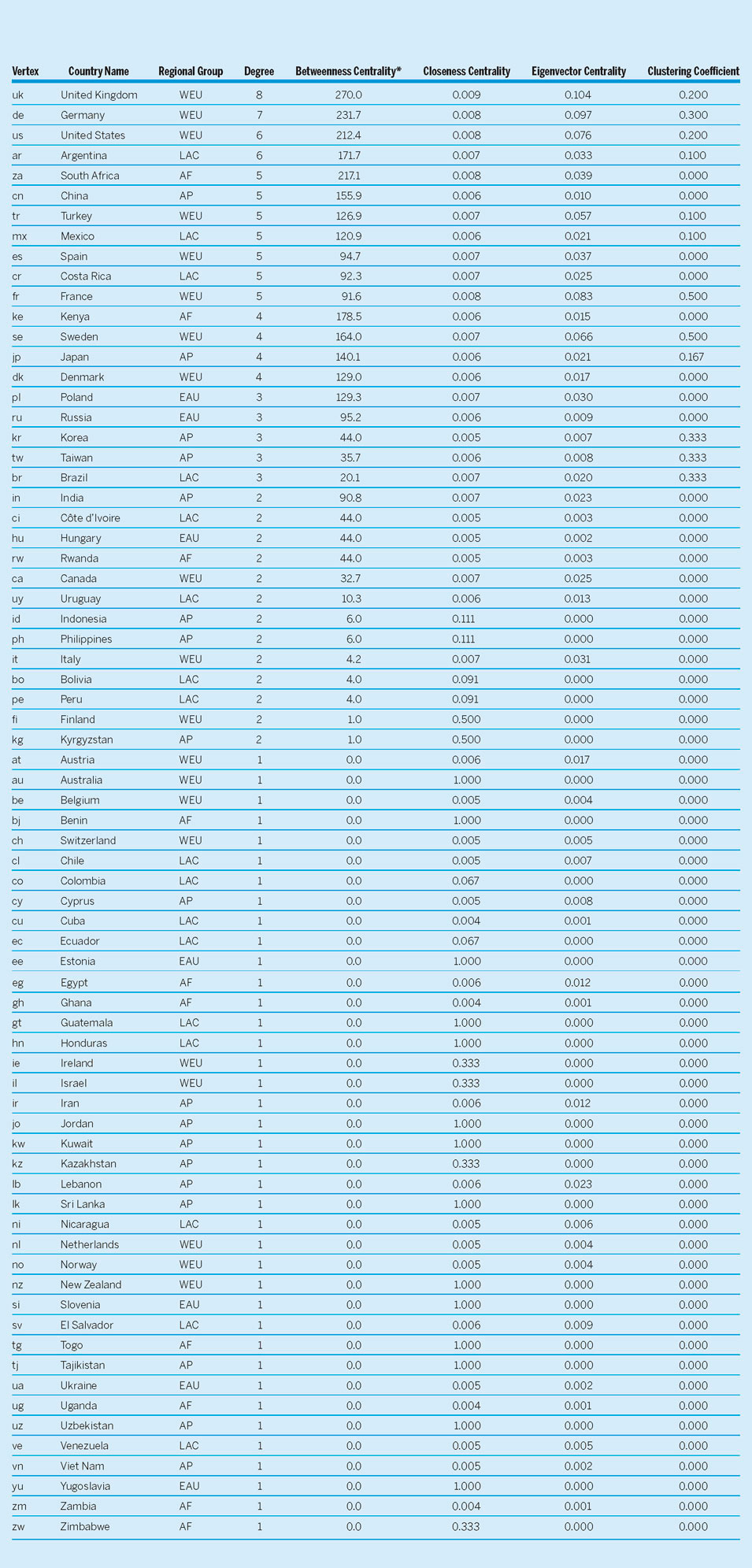
*Rounded to one decimal place
IMPLICATIONS
This study examined the extent to which different regions and countries appeared as the focus of articles published in the two major CP journals: JCP and CPS. It addressed the question of which countries and regions are favored (and disfavored) by studies published in these US-based journals. It found that for both journals, there is similarity in the distribution of countries and regions of interest. Specific regions and specific countries within regions are favored. Finally, specific pairs of countries are favored in studies of the same region. This is evidence of parochialism and bias in the representation of both regions and countries in CP.
Several questions, however, remain unanswered and are beyond the scope of this study. What might account for these findings? There are several plausible explanations that are not mutually exclusive. The bias in representation of regions and countries may be due in part to the distribution of CP scholars, with more specialists residing in the United States and Western Europe. Perhaps there is more vigorous competition by these US and Western European specialists to publish in the top CP journals, resulting in more and higher-quality submissions. It may be due in part to the existence of regional journals in which area specialists prefer to publish. They may believe that if their manuscripts are sent to a regional journal, they will receive more knowledgeable and helpful reviews and, if published, will be more widely read and cited.
There may be other explanations. Perhaps data are more readily available or easier to gather from some countries and regions than others. Finally, what CP scholars regard as the more important questions in their subfield may be better studied by focusing on some countries and regions. Thus, editors and reviewers might be making judgments about the quality of a manuscript based on their understanding of the field of CP and a decision on whether the manuscript is addressing a significant question and making an important contribution to theory.
A provocative explanation is that the bias is in part a legacy of colonialism. If Western European scholars, in particular, are specialists in countries and regions outside of the WEU region, their choice of countries and regions is based in part on their home country’s colonial history. Further research is necessary to determine the relevance of these potential explanations.
What is the significance of these biases for the field of CP? It seems to depend on what explains these biases. If the biases reflect the distribution of scholars, it is arguable that there is too much scholarly attention given to some countries and regions and too little to others. Specialists in countries and regions that are crowded with scholars, where there are more submissions, likely will experience more competition to publish. Indeed, these scholars already may have answered most of the important questions. As a result, scholars’ efforts are spent finding answers to questions that, although still interesting, are less important. If the explanation is due to regional specialists sending manuscripts to regional journals, however, this may reflect a beneficial division of labor in CP.
Questions that are important to specialists in the politics of the United States and Western Europe, for example, are not likely to be important to specialists in the politics of other countries and regions. If the reason is that data are more readily available or easier to gather from some countries and regions, there is reason to think about why this is so and, if possible, to find solutions, such as increased funding for cross-national survey research (e.g., World Values Surveys) and large-scale CP data-collection efforts.
CONCLUSION
This study examined the extent to which different regions and countries appeared as the focus of the major US-based CP journals from 1990 to 2015. The major finding is the disproportionate representation of particular regions and countries. Some regions and countries have been over-valued and over-researched; others have been under-valued and under-researched. A conjecture is that the uneven distribution of concern reflects in part a lingering colonialist attitude. For some CP scholars, there are countries and regions that weigh more heavily in the calculus of what is and is not important.
ACKNOWLEDGMENTS
I express my heartfelt thanks to my professors, Dr. Daniel S. Geller, Dr. Lawrence Alvin Scaff, and Dr. John Martin Strate, for their unstinting encouragement and support. Dr. Strate made helpful comments in the development of this article. I also thank Dr. Kevin Deegan-Krause for his suggestion.





